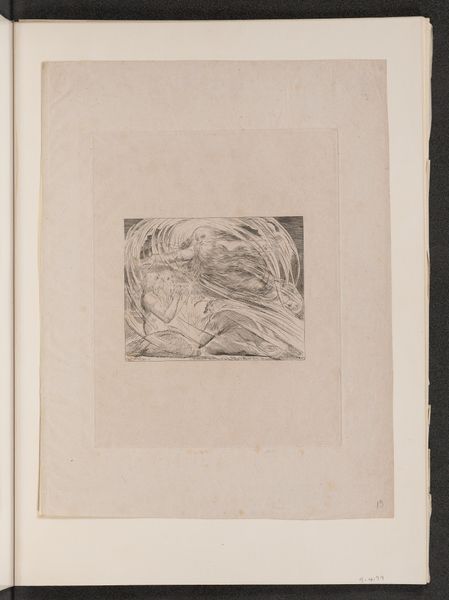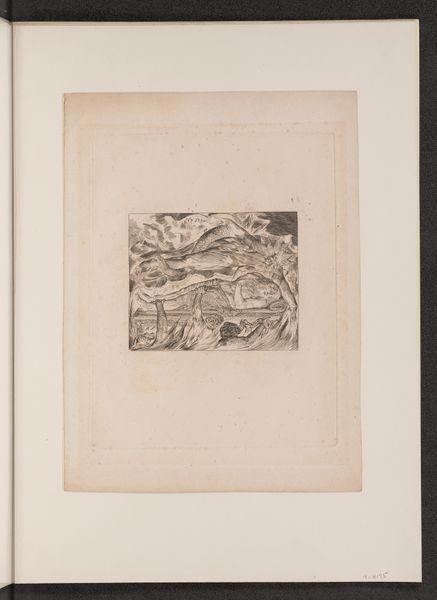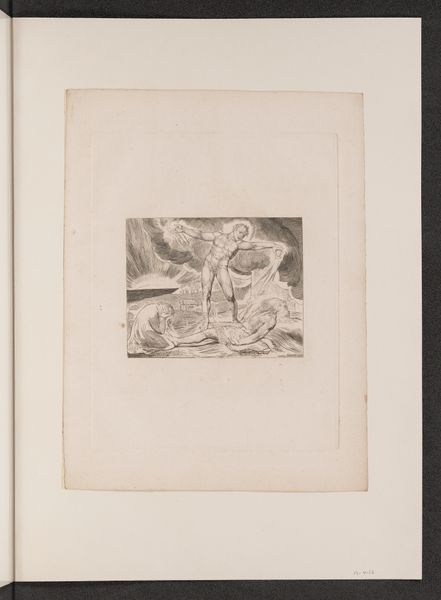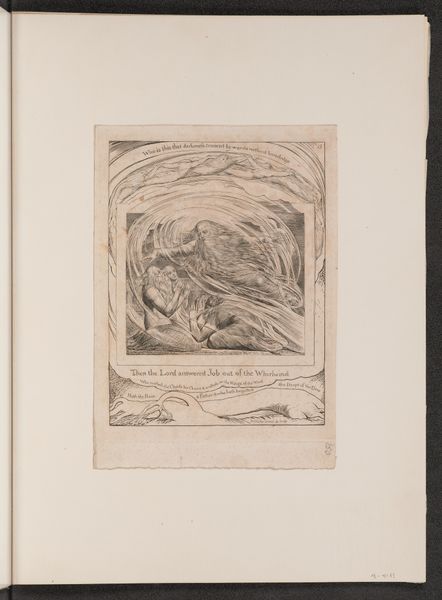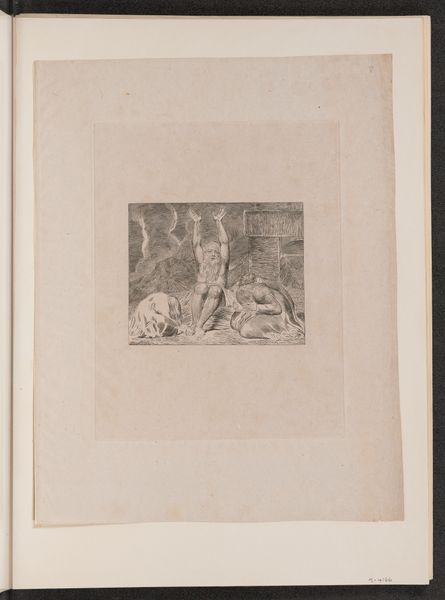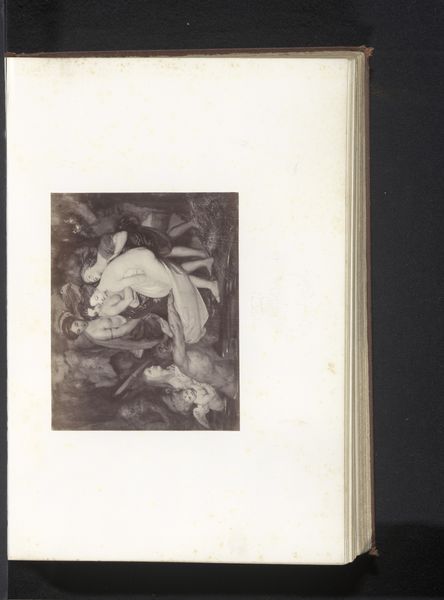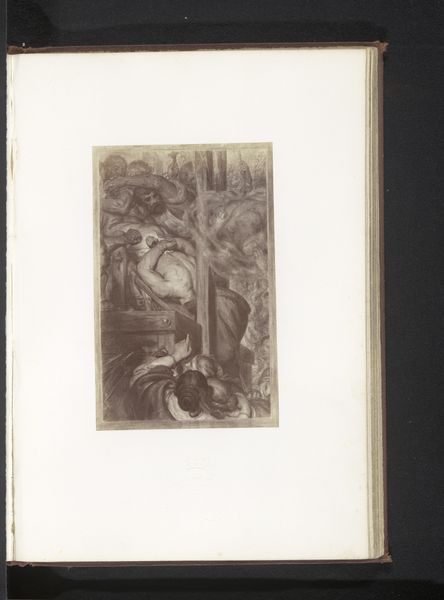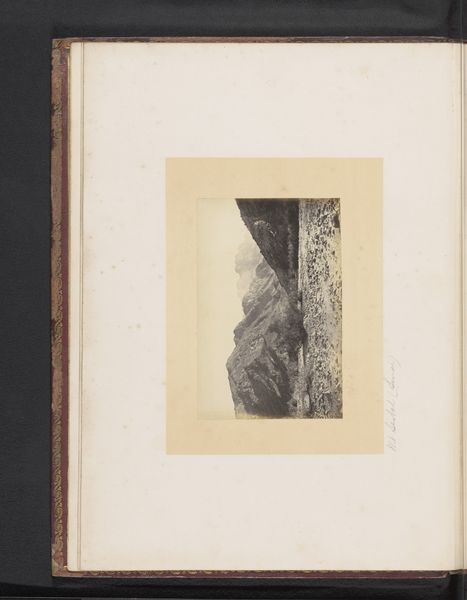
drawing, print, paper, ink
#
drawing
#
narrative-art
#
ink paper printed
# print
#
figuration
#
paper
#
ink
#
romanticism
#
history-painting
Copyright: National Gallery of Art: CC0 1.0
Curator: I’m immediately struck by the composition. The messenger seems to burst onto the scene with such kinetic energy, contrasting sharply with the figures huddled in the background. It's almost like a silent film still. Editor: Precisely. This is William Blake’s print from 1825, titled "The Messengers Tell Job of His Misfortunes," rendered in ink. Notice the messenger. Traditionally, one expects bearers of bad news to be received stoically or with great lamentation, yet they arrive as entities consumed by a storm. The sky appears to be a vortex of despair that accompanies them. Curator: Right! Look at Job and his family; their pose almost mimics the shape of a Gothic arch, framing their shared grief. There’s something inherently ritualistic, architectural, even, in their reaction. Editor: The visual language in Blake’s rendering tells more than the messengers alone, echoing Job’s internal spiritual ordeal, shaped by a theology both rigid and in crisis. Messengers arrive not as heralds, but embodiments of crisis. Even the trees seem to twist with premonition. Curator: Yes, everything in this image seems laden with a sort of spiritual agony. Even in a simple ink drawing, Blake conveys such depth of emotion and meaning. The poses feel simultaneously classic and uniquely stylized. It's heavy stuff but beautifully composed! Editor: True. And for the Romantic era, such emotional intensity conveyed through allegorical images serves as both a deeply psychological study, as well as moral allegory—a timeless tale that invites us to contemplate suffering and belief. The image compels us to consider what persists within ourselves and our cultural narrative. Curator: I find I return to the composition of the figure in motion disrupting those who sit still, in consideration of the way crisis often changes everything forever. Editor: And for me, seeing Blake's symbolic narrative reminds us of the narratives, shared and solitary, that guide us. It allows us to interpret how tragedy changes us—both within our minds and culture's consciousness.
Comments
No comments
Be the first to comment and join the conversation on the ultimate creative platform.


